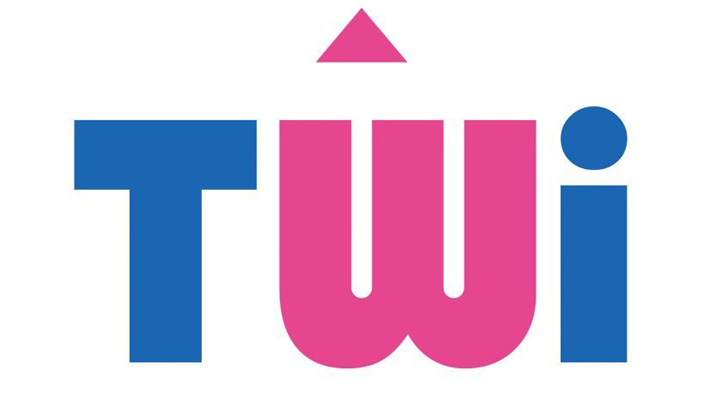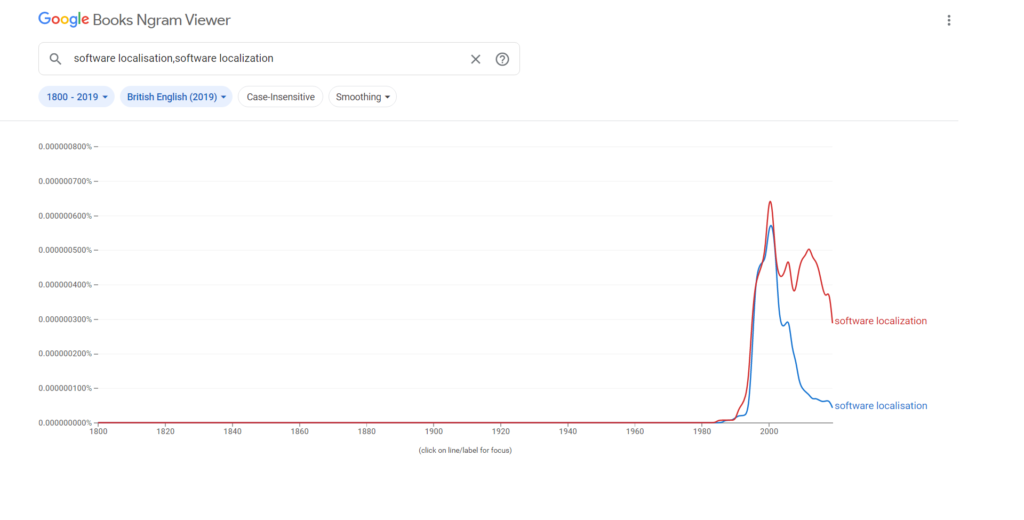The most widely spoken language in Ireland is Hiberno-English, which uses the same spelling conventions as UK English. It might be reasonable to expect that the spelling “localisation” (with an “s”) is common here, but that’s not really the case. This blog explores the reasons why.
TWi is an Irish technical writing company that offers translation and localization services across many markets globally, including a number of different English-speaking markets. We can say pretty authoritatively that yes, of course, spelling matters. Our decision to spell “localization” with a “z” was not taken lightly. It was the result of a long and considered process that carefully weighed up passionately held views on the merits of each option.
The Ize Have It?
In the TWi camp batting for “localization” with a “z”, we had die-hard veterans of the localis/zation industry. This industry-first emerged in the early 1980s in response to the need for professionally translated software. Early pioneers advocated the spelling “software localization” in order to reflect the de facto standard in an industry still shaped by the early predominance of large US software companies. The widely held view that the “iz” spelling derives from US English came under fire. The “iz” form is not in fact specific to US English; it comes from Ancient Greek and its first recorded use in British English is in a 15th-century edition of the Oxford English Dictionary (OED). Tucked away in an extract from the English translation of a treatise written by the French physician Guy de Chualiac, an “iz” spelling made its first recorded appearance in the Oxford English Dictionary in 1425:
We can modernise that as “the brain, along its length, has three ventricles. Every ventricle has three parts, and in every part is organized one function”. Today, a technical writer would transform it into:
As you can see, language evolution is not new. Spelling and punctuation are constantly evolving. Rather than battle the trend, a prudent writer or editor must keep pace with the changes as they happen, or risk being left behind. The OED adds around 1,000 new words every year. 2019’s entries, for instance, included “simples”, “whatevs”, and “chillax”. The rate of obsolescence is comparable. Every year, hundreds of words are written or uttered for the last time. Not even letters are immune. The above example uses the obsolete letter thorn (þ) which, along with eth (ð) and yogh (ȝ), had fallen out of popular use in English by the 16th century.
A Thorny Issue
Letters come and go. Thorn was mostly obsolete by 1475. If a printer needed to use it after then, the letter y was often substituted. That’s why “old-fashioned” signs use the faux-archaic “ye” instead of “the”. The word “ye” in this context was always pronounced like “the”. Thorn and eth are still used for writing Icelandic.
To V or Not to V?
The Romans didn’t use the letter U. They wrote “V”, which they pronounced like our W. English sounds quite different to Latin, so the Romans’ V gradually separated into English’s V, U, and W. For a time, V and U remained interchangeable. That’s why we call W “double u” even though it looks like “double v”.
Back at TWi, supporters of “localisation” with an “s” responded by patiently explaining that the devil, as always, is in the detail. The OED uses the “iz” form for reasons of etymology. In our example above, “organized” is written with a “z” because it reflects the Ancient Greek suffix from which the word is derived. Similar words not derived from Ancient Greek are treated differently, and so “analyse” and “comprise” are only ever spelled with an “s” in UK English.

Our “localisation” advocates then played their trump card – TWi’s own house style guide. A style guide is a set of rules that documents a company’s approach to how they write their content. It defines your tone of voice, your brand identity, how you want to be perceived by the outside world. It also documents the company’s choices in relation to capitalisation, punctuation, and spelling. Style guides ensure consistency, and when TWi’s house style guide was being written, the choice was made to use only UK-style spellings, with “is” in place of “iz”.
Language Is a Numbers Game
In final defence of their case, advocates of “localization” turned to the online evidence. Google Ngram Viewer, a mighty little tool that charts the popularity of a word or phrase over a given period, produced graphs that showed how “software localization” has steadily outperformed “software localisation” in the UK since the mid-2000s, not long after the term was first coined. Results from Google Trends were even more compelling. Worldwide, people are five times more likely to search for “software localization” regardless of their location. If someone enters that phrase into a search engine, they become our target customers. Swapping “s” out for “z” greatly increases our reach.
Some of the most common modern words are also among the fastest to evolve, and businesses must evolve with them. Email, for example, was originally “electronic mail”. Not long after, it became “E-mail”, and then “e-mail”. Now, the convention is simply “email”, with no capital letter or hyphen. The appearance of any of the older terms on a web page is interpreted by search engines as old content, which is seen as less useful and relevant by a search algorithm. This will cause a slip in rankings. Even though other information on the page may fulfil a user’s needs, a search engine will prefer a page with similar information and more modern terminology, even if the search itself has nothing to do with email. Adaptability and “moving with the times” are vital to remain ahead of the competition. Staying still is not an option in the world of SEO.
This holds true across the board. As we’ve seen, “localisation” is rapidly losing ground to “localization” and search algorithms consequently move pages using the older term further and further down the rankings. This accelerates the rate of obsolescence for the “is” version. Content creators, digital marketers, and social media mavens must be constantly on alert for changes in word usage. They must stay abreast of the latest trends in search term relevance using tools like Google Trends and Ngram Viewer, among others.
The Life of Style
Predicting and compensating for this fast-moving bias, and ensuring consistency, fall firmly within the realm of the style guide author or editor. We’ve already examined the role of a style guide in ensuring consistency and establishing a distinctive voice for a company or a brand. It’s important to remember that no worthwhile style guide can be a static, immutable document. Instead, every style guide must exist as a so-called “living document”, constantly open to revision and updates. Style guides are by their nature prescriptive, but they must always respond to the descriptive nature of language in action.
That’s the main reason why, say, the New Oxford Style Manual is on its third edition, or the venerable (and enormous) Chicago Manual of Style is now on its 17th in just over a century. Language and writing never ever stop moving, and it is the job of compilers and editors to respond to the new and wonderful ways that humans instinctively innovate with words. This includes the almost Darwinian way that some spellings will eventually replace others. 100 years ago, these guides would not have thought the forms “shew”, “nutriment”, or “reflexion” to be anything out of the ordinary. Nowadays, we use “show”, “nutrition”, and “reflection”, and coming across the older forms can cause a moment of confusion.
Technically, these obsolete words and thousands like them are still part of the English language. The OED doesn’t remove words. However, they’re now considered to be archaic and would never be used in any professional context – except as examples of how words and styles change. Change is purely a matter of preference, and nothing to do with any sort of deficiency in the alternative spelling. There is nothing inherently wrong with “shew”, for instance, except that it has fallen out of favour.
The pace of change has quickened because of the spread of literacy and the democratisation (or should that be “democratization”?) of language brought about by the online revolution. Casual writing makes up the bulk of social media content. In her outstanding book Because Internet, the Canadian linguist Gretchen McCullough traces the changes in English since the proliferation of smartphones and the rise of social media. We’ve taken our “email” example from an early chapter in Because Internet, but she provides hundreds of others.
In some ways, this new and massive accessibility of language has brought us back to the glory days of the 15th century, as in our anatomic example. In the 2020s, neologisms are rife and rules are made to be broken and remade. This not only lends fun and a personal touch to writing, but sets in motion changes that may eventually lead to brand new standards and writing conventions. This is the same unstoppable process that has seen the scorned portmanteau “chillax” take its place in the hallowed pages of the OED, and words like “portmanteau” become dry and dusty remnants of a bygone age.
Quis Custodiet Ipsos Custodes?
When we write style guides, translate documents or articles, and localize or transcreate the essence of a message into a different language or dialect, it’s our job to build on those changes and to remember that they’re never set in stone. We’re custodians of today’s English, but the language has been around for nearly 1,500 years and has never stopped moving or growing. Tomorrow’s English will always be different from today’s. We no longer eat eyren or egges (we eat eggs), we no longer hitch a hrosset to a vagn (we hitch a horse to a wagon), and modern Dumbledore is a beloved wizard, not a tubby, clumsy bee. Spelling absolutely matters, but it’s not the be all and end all. It’s a fluid concept. Localization is something that happens in time as well as in space, and time – just like the tide of language – waits for no one.
Images Used
- Image by Clarissa Watson, licensed by Unsplash












